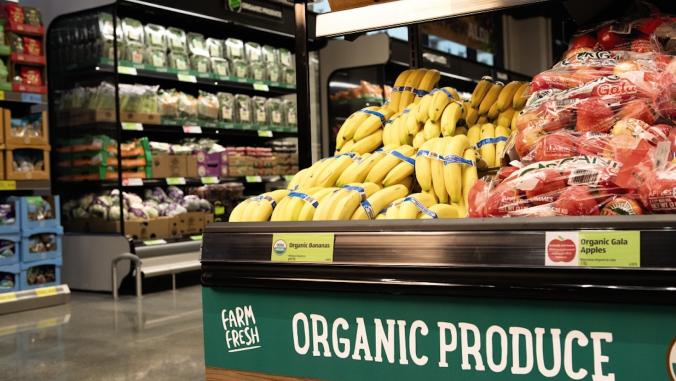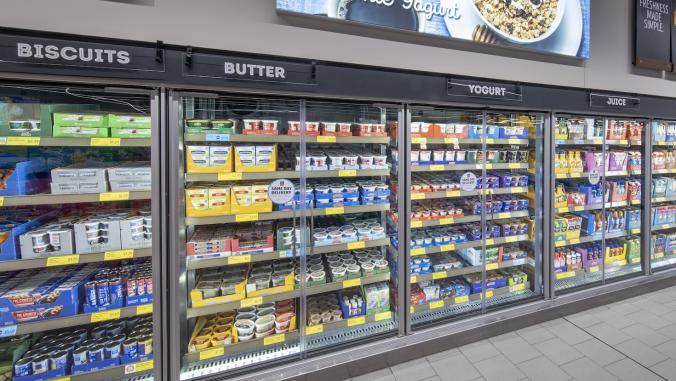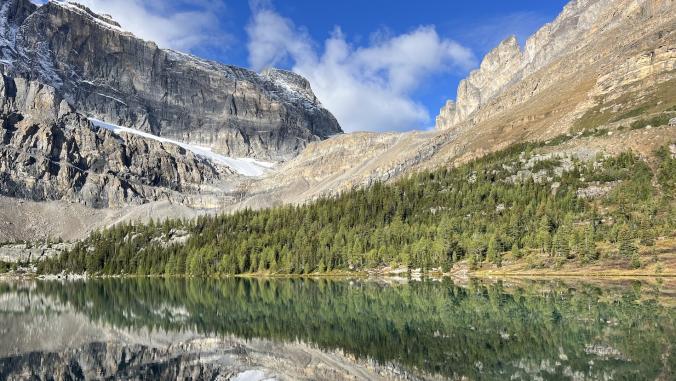As COVID-19 rampages through vulnerable minority populations with tragic consequences, and protests for racial justice surge among a similar demographic, city climate planners see a renewed focus on climate justice.
The pandemic, in some ways, has been a trial run for the anticipated coming impacts of climate change — a not-so-distant future in which low-income and minority populations are the most at risk. As mayors make quick strategic changes to address the short-term COVID crisis, they are also in the midst of planning for similar long-term climate issues.
Last week, the C40 Cities Climate Leadership Group, an organization of mayors from around the global, launched a Detailed Agenda for Green and Just Recovery from COVID-19 to ensure that this crisis propels sustainable innovations instead of a return to old ways.
"Equity is really at the heart of our recovery in the city," said Mayor LaToya Cantrell of her city, New Orleans, during the C40 press conference. "We’ve had 542 deaths [due to COVID-19] in our city and out of the 542, 404 were Black or Brown. Our response to this pandemic is an opportunity to create a much more healthier, more sustainable and equitable city, no doubt about it."
Another organization, Climate Mayors, a network of 438 United States mayors, hopes to provide peer-to-peer sharing between American cities to help adapt to and in some ways reverse our changing climate. It has helped fill the U.S- shaped hole in leadership left by the Trump administration.
"We want to make sure we're reflecting back to the international community that there is a lot of effort going on to reduce emissions and energy technology," said James Ritchotte, director of Climate Mayors.
GreenBiz recently spoke with eight chief sustainability officers and mayors that are part of the Climate Mayors network to understand what actions they are taking to ensure climate justice is embedded into their climate resiliency plans. Below are excerpts from the interviews, edited for length and clarity.

Boston
Boston is aiming to be carbon neutral by 2050 by focusing on their 86,000 buildings. The city is also investing in seawalls to prevent erosion due to sea level rise.
Christopher Cook, chief of environment, energy and open space
On COVID-19 pandemic learnings that can apply to climate change initiatives:
What COVID has put in the forefront is how interwoven racial equity is with our climate crisis. Those social equity gaps in our society show how intentional we have to be in the climate work to make sure that we’re not exacerbating the situation. We have to be very intentional about job creation, or else our most socially vulnerable won’t be able to fully participate. We started very intentional conversations with our Office of Workforce Development to make sure that we are connecting directly with communities of color, and are starting a job training program for city retrofitting.
On how COVID-19 gives us a chance to help vulnerable populations:
We can take [the pandemic as an] opportunity to be intentional about creating a cleaner respiratory environment for our citizens, especially those living in affordable housing. People need to have air filters and high-quality HVAC systems. Can we also use this as an opportunity to electrify those systems and retrofit those systems? So as we make buildings more efficient and cleaner from a carbon perspective, can we also make them healthier buildings?

Carmel, Indiana
Carmel is focusing on making its city greener through transportation initiatives, including more bike access and roundabouts.
Mayor James Brainard
On how making the city more bike accessible is an environmental justice issue:
Everybody talks about affordable housing, it's really more about affordable living. A lot of city design requires huge amounts of a poor person’s expenditures be spent on gas, automobiles and insurance. We unveiled 225 miles of bike trails so you can get anywhere within the city of Carmel by bicycle, which is also important for environmental justice. To somebody who can't afford a car, that makes a huge difference. So many times we’ve designed our cities so that not having a car isn’t even an option. We are also working to make our city beautiful, too. Wealthy people can travel to some of the most beautiful places on earth. But for people who can’t, they have a right to have their city be beautiful as well. So we focused on that through public art and beautiful parks and trails.
On environmentalism as a Republican issue:
[Environmentalism] is a Republican issue. It was Teddy Roosevelt that started the national parks. It was Eisenhower who set aside the arctic reserve. It was Nixon and Ford who signed the EPA into existence. The Migratory Bird act was Nixon. The Endangered Species Act was for Nixon. The Republicans were very much environmentalists, starting with Teddy Roosevelt. Ford was always environmentalist, and got a lot done. And it disappoints me that this is something the Republican party has not focused on recently.
On how two ideologies can come to the same decision that benefits climate:
I had a guy who was very conservative giving me a hard time about spending $750,000 on switching to LED streetlights. So I said to him, "Well, what about the cost savings?" Because of less electricity, the savings will be about a 22 percent a year annualized rate of return on that money we invest. I showed him the bills. And he said "Oh, I guess this is a pretty good idea." So he didn't care about the environment. But he did care a lot about the return on investment. By the time we ended the conversation he got to the same place. But not for the environmental reason, but for a fiscal reason. People can get in the same place for different reasons.

Houston
Houston has committed to 100 percent renewable energy for all municipal buildings on its way to reaching carbon neutrality by 2050.
Marissa Aho, chief of resilience officer
On Houston’s strategy for imbedding climate justice into climate resilience:
In January we released a report with recommendations particularly related to flood resilience. We focused on three historically underinvested communities in Houston: Independence Heights; Greenspoint; and Kashmere Gardens, which is part of Mayor [Sylvester] Turner's Complete Communities Plan initiative, which is looking at 10 of our most historically under invested African American and Hispanic, Latinx neighborhoods, and creating action plans to improve quality of life. A majority of the key actions are really understanding that our most vulnerable people, places and systems are disproportionately affected when there is any disruption. So, we have a number of targets but one is to address the huge disparities in life expectancy depending on what neighborhood you grew up in or live in. And that pre-COVID was a 24-year disparity.

Los Angeles
Los Angeles is on track for a 45 percent decrease in emissions by 2025 with the goal of carbon neutrality by 2050. The city's climate initiatives was written in conjunction with creating new green jobs as part of Los Angeles’ Green New Deal.
Lauren Faber O'Connor, chief sustainability officer
On how Los Angeles plans to address heat issues to benefit lower-income communities:
A big concern of climate change are impacts of heat and extreme heat in Los Angeles. Some of our citywide goals just facilitate a cooler, more resilient city, and I mean cooler as in temperature. This needs to happen citywide but we’re targeting the rollout in communities that are in greatest need and have the lowest tree canopy and the most vulnerability, like an elderly population, low-income population who may not be able to run an AC if they even have an AC. We want to make sure that we’re cooling those neighborhoods, and doing it in a way that meets their needs by focusing on the walk to a bus stop and at the area around the bus stop. The laying of cool pavement to reduce the urban heat island effect by literally paving a lighter shade over our streets. And then combining those with local tree planting to create more canopy cover and doing those things in neighborhoods that need it the most.
On focusing money towards overlooked communities:
The Transformative Climate Communities Program was created by the state through the climate investments, cap and trade dollars. We worked with local community leaders to prepare projects that would apply for state funding. The first year the Watts neighborhood was awarded a $30 million grant... They’ve suffered a lot of injustices and need more significant and more direct investment. We prioritize that with incredible innovation by electrifying the local buses, electrifying the service in Watts. But also providing an EV Car Share service, bike share and bike lanes, multiple pedestrian improvements to allow for more walking, rooftop solar for home. What's incredible is that when we hear from our community leaders, they would say to us that Watts is always last. In this project, LA has put Watts in the front of the line.

Oakland, California
Oakland’s climate action plan to get to carbon neutrality includes funding for a downtown shuttle, constructing electric vehicle charging stations and launching a green retrofitting program for residential houses, among 29 other initiatives.
Daniel Hamilton, sustainability program manager
On climate programs that address inequities:
When we talked about the need to create denser urban environments to accommodate more people, the community said, "Well, it’s not just about the densities and the land use. Its about housing discrimination." The climate solutions to these couldn’t be ignorant of or silent on those types of topics. The action items are designed specifically to address the broader social issues as well as climate issues. It’s not just a greenhouse gas reduction policy. It's a policy that targets the systems that create the greenhouse gases in ways that address historic inequities and provide some solutions. An example of this would be the action items focused on anti-displacement, so keeping people rooted in Oakland. When we talked about this densification of land uses, housing came up as a big issue. But the final action item doesn’t say "provide greater densities." The final action item is actually support for the community land trust model to build wealth within the communities to allow people who are in Oakland to stay in the community and not have to move out to second- and third-tier suburbs and drive a lot further to get to the same jobs they exist in today.

Orlando, Florida
Orlando hopes to power the city entirely off renewable energy by 2050. But the city’s 2018 Community Action Plan is on an even quicker timeline, establishing goals for 2040 that include getting the government's 232 buildings up to LEED code, planting 20,000 trees and increasing the electrical vehicle infrastructure.
Chris Castro, director of the office of sustainability and resilience
On creating programs that help low-income communities meet overall climate goals:
Low- and moderate-income communities often are spending two and three times as much per square foot on utilities than more affluent communities. The landlords of these homes or apartments are reluctant to make ongoing maintenance improvements to them. So they have very outdated air conditioning systems, outdated insulation and lighting. As a result, they have less resources, but they're spending more on their utility bills. In one of our notorious communities of color, Paramore, people are burdened by upwards of 18 percent of their household income being spent on utilities. The average across in Orlando is 4.5 percent. That has helped us to develop new programs. We've partnered with a nonprofit called SELF, Solar Energy Loan Fund. We helped them establish their regional headquarters in Orlando. They provide funding, specifically to low and moderate income communities for home energy improvements, reducing energy and water use, lighting and HVAC, onsite solar, and even sewer and water improvements. It’s a loan product that is really looking at an unsecured very low interest loan for homeowners. So a person with a low credit score of 500 can get a loan for 5 percent to 6 percent interest from SELF versus getting laughed out of the bank when they’re asking for a loan to get a new AC system. This is an opportunity for people on the low and moderate income spectrum to have the financial tools to make these home improvements that improve quality of life, save energy, save water and reduce carbon right at the end of the day. I think we've invested about $150,000 over the last few years to help them out.

Richmond, Virginia
To reach the city’s goal of net zero by 2050, the sustainability office is focusing on increasing alternative energy options with solar panel installations.
Alicia Zatcoff, sustainability manager
On climate mapping helped with the COVID response:
We have a pretty sophisticated mapping, the equity index. We have gone through and assessed and about 35 social vulnerability factors including geographic-based and demographic factors, resulting over 140 layers and pieces of data on the map. We rank those pieces of land using our climate equity index to identify where new parks or open spaces could be. We mapped our heat index looking for our heat islands. Using the equity index we can prioritize those areas, which is a different approach than we would have taken a year or two ago. So we’ve done that for climate. And then when COVID hit, we went back to see what the risk factors are for getting COVID and then the factors for getting severe disease or dying. And what we found is they are so closely aligned with the climate risk and vulnerability factors.

Saint Paul, Minnesota
Saint Paul’s top priorities are to become a net-zero community by 2050 and to reduce greenhouse gas emissions 50 percent by 2030.
Russell Stark, chief resilience officer
On how car sharing will benefit low-income communities
We are making sure that at the same time that we’re reducing emissions, we’re actually creating a mobility access benefit for our lowest-income communities. For example, car sharing has operated on a round trip model. Most of the parking locations are where the market is, usually around colleges or high density neighborhoods or in some cases better-off neighborhoods. When we thought about expanding our car share was to expand the service into some of our lowest income communities and communities of color. We are partnering with community-based organizations to expand that service into 10 locations that really haven’t had the service before.
This article was updated July 24 to correct information in the Richmond, Virginia, and Saint Paul, Minnesota sections. A portion of the Richmond representative's quote was removed for clarity.






